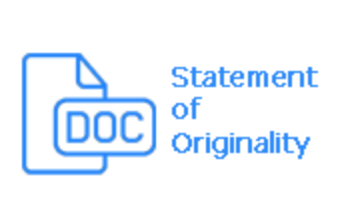GLOBAL HALAL INDUSTRY: REALITIES AND OPPORTUNITIES
Abstract
Keywords
Full Text:
PDFReferences
Ager, S. N. S., et al. AN ANALYSIS OF THE DEFINITION OF HALAL: SHARI’AH VS STATUTES. World Academic and Research Congress 2015 (World-AR 2015) Ar-Rahim Hall, YARSI University, Jakarta, Indonesia, 9th – 10th December 2015.
Bio Malaysia & Asean Bioeconomy Conference. (2015). HALAL ECONOMY : Opportunity and Challenges. Retrieved from http://biomalaysia.bioeconomycorporation.my/speakerssliders/day1/session2perlis/BioMalaysia 2015-v4(17.08.2015).pdf
Catto-Smith, C. (n.d.). THE WEEKLY LINK Halal logistics a fast-growing market. Retrieved from http://www.halalrc.org/images/Research Material/Literature/Halal logistics a fast-growing market.pdf
Economy of the Organisation of Islamic Cooperation. (n.d.). Arabian Business. Retrieved from http://www.arabianbusiness.com/muslim-tourism-sector-said-be-worth-over-138bn--growing-656633.html
Fleishman Hillard Majlis (2011). "The Market Opportunity of the Muslim Worldâ€.
Global halal market - Statistics & Facts | Statista. (n.d.). Retrieved October 17, 2018, from https://www.statista.com/topics/4428/global-halal-market/
imarat Consultants. (n.d.). An Overview of the Global Halal Market South East Asia Driving the Halal. Media. Retrieved from http://www.halalrc.org/images/Research Material/Presentations/overview of global halal market.pdf
Jabatan Kemajuan Islam Malaysia. (2015). Manual Procedure for Malaysia Halal Certification (Third Revision) 2014. Manual Procedure for Malaysia Halal Certification (Third Revision) 2014, 67. https://doi.org/10.1017/CBO9781107415324.004
Latif, H. (2017). Outpacing The Mainstream: State of the Global Islamic Economy Report 2017/18. https://doi.org/10.1007/s00348-013-1600-9
LIPKA, M. (2017). Muslims and Islam: Key findings in the U.S. and around the world. Retrieved November 5, 2018, from http://www.pewresearch.org/fact-tank/2017/08/09/muslims-and-islam-key-findings-in-the-u-s-and-around-the-world/
List of Muslim Countries by GDP Purchasing Power Parity (2016—2020) - Materia Islamica. (n.d.). Retrieved November 5, 2018, from http://materiaislamica.com/index.php/List_of_Muslim_Countries_by_GDP_Purchasing_Power_Parity_(2016—2020)
Muslim Population in the World. (n.d.). Retrieved October 31, 2018, from http://www.muslimpopulation.com/
Malboobi, M. T. and M. A. Malboobi (2012). Halal concept and products derived from modern biotechnology. International workshop for Islamic scholars on agribiotechnology: Shariah compliance.
Nor Ai’han Mujar, N. H. (2015). THE ECONOMICS OF HALAL INDUSTRY. Journal of Experimental Psychology: General, 136(1), 23–42.
Pacific, A. (2010). Global Halal Industry : An Overview. Global Islamic Finance Report 2013, 140–159. Retrieved from http://www.gifr.net/gifr2013/ch_13.PDF
Personal, M., Archive, R., Puah, C., Voon, S., & Entebang, H. (2009). Halal Industry : key challenges dan Oppotunities, (10679).
Price level ratio of PPP conversion factor (GDP) to market exchange rate. World Bank (The World Bank Group). Retrieved Nov 5th, 2018.
Pharmaceutical Drugs Global Market Report 2018, The Business Research Company, March 2018, retrieved from https://www.marketresearch.com/Business-Research-Company-v4006/Pharmaceutical-Drugs-Global-Musculoskeletal-Disorder-11518658/?progid=90731
Zakaria, Z. (2008). "Tapping into the world halal market: some discussions on Malaysian laws and standards." Shariah Journal 16(3): 603-616.
DOI: http://dx.doi.org/10.30659/ijibe.5.1.47-59
Refbacks
- There are currently no refbacks.

This work is licensed under a Creative Commons Attribution-ShareAlike 4.0 International License.
IJIBE (International Journal of Islamic Business Ethics) has been Indexed by













